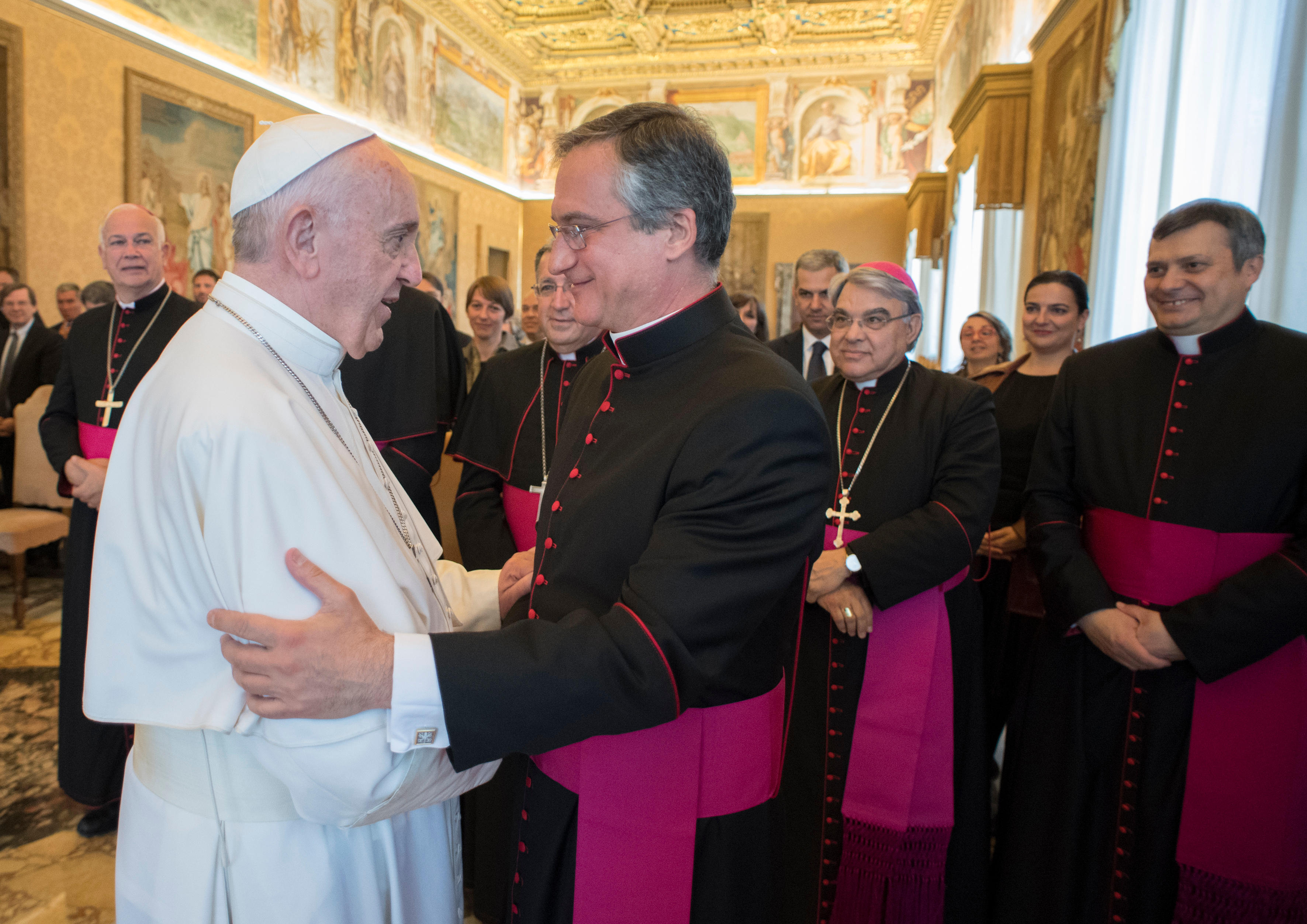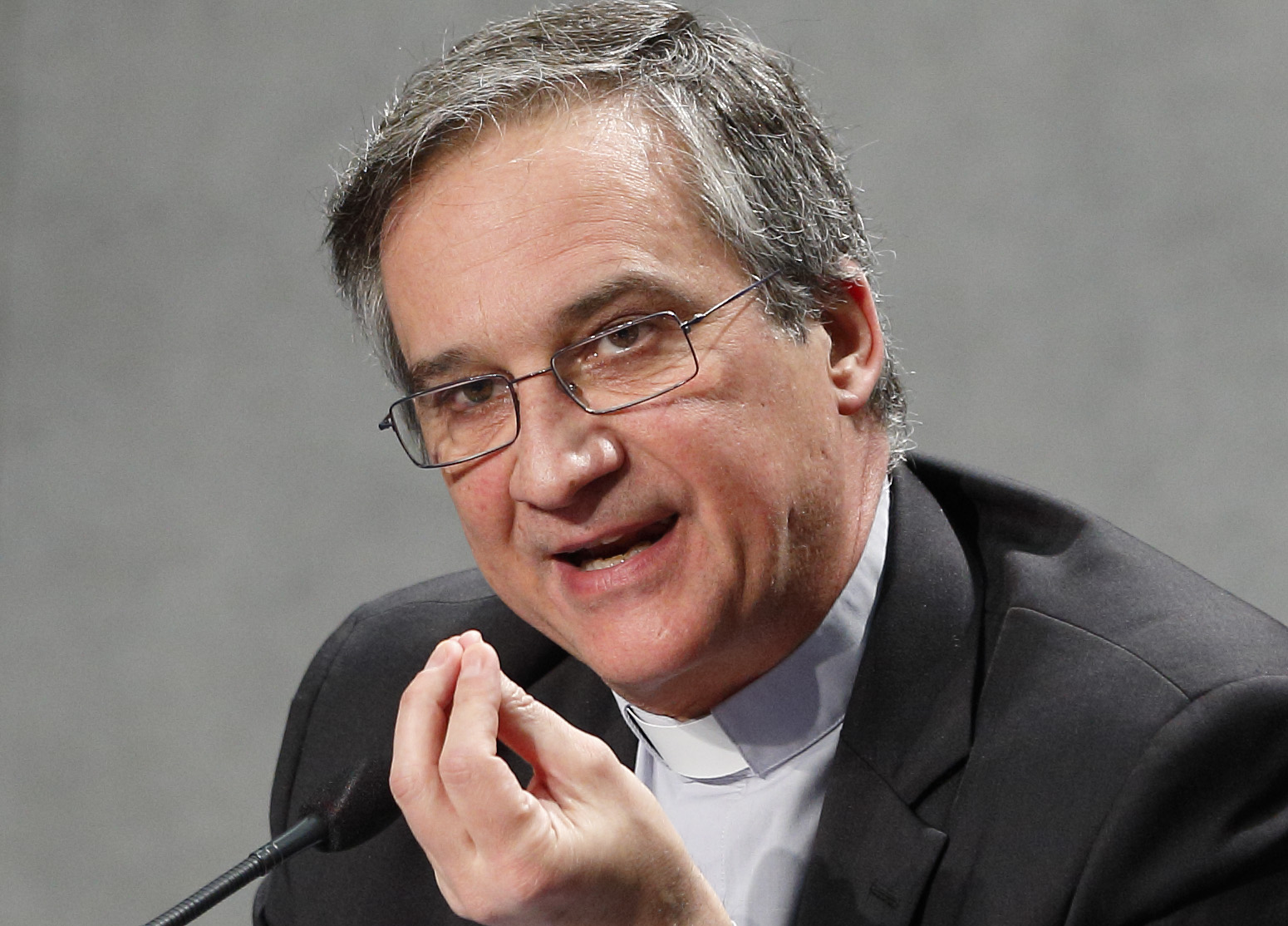The resignation of Mgr Dario Viganò comes after the Vatican's Secretariat for Communication suffered a damaging loss of credibility by selectively citing a letter from Benedict XVI in an attempt to present continuity between Pope Francis and his predecessor.
The secretariat for communications came under heavy criticism last week for both blurring part of a photograph of the letter and withholding another section, although in a statement said there was “no intent” to censor.
It argued that the private letter, written for the launch of an 11-volume series on the theology of Pope Francis and released on the fifth anniversary of his papacy, was private and therefore it decided to highlight only certain parts.
Mgr Dario Vigano, the prefect of the communications secretariat, read out the letter in which Benedict XVI dismissed as “foolish prejudice” the idea that Francis is practically focussed and without theological and philosophical formation while he, Benedict, is a “theorist of theology” out of touch with reality of Christian life. The Pope Emeritus also said there was an “interior continuity” between himself and Francis.
But Mgr Vigano did not read out a part of the letter where Benedict expressed “surprise” over the inclusion of German theologian Peter Hünermann as one of the contributors to the 11 volumes. A photo of the letter also blurred out lines where the retired Pope said he could not provide a detailed theological assessment of the works, nor was that included in the press release.
Benedict expressed his “surprise” that the German theologian, Professor Peter Hunermann, was author of one of the 11 volumes.
“Only as an aside, I would like to note my surprise at the fact that among the authors is also Professor Hünermann, who during my pontificate had distinguished himself by leading anti-papal initiatives. He played a major part in the release of the “Kölner Erklärung”, [Cologne Declaration] which, in relation to the encyclical “Veritatis splendour”, virulently attacked the magisterial authority of the Pope, especially on questions of moral theology,” Benedict wrote.
Professor Hünermann has been a long-time critic of Benedict XVI including when he was Cardinal Joseph Ratzinger and also of Pope St John Paul II. Together with Ratzinger and Hans Küng, Peter Hünermann is one of Germany’s best-known theologians, and during the Second Vatican Council, Hünermann taught dogmatics at Freiburg and later at Münster.
He is a keen supporter of the Council and the epochal shift it triggered. In 2004, together with Jochen Hilberath, he published a five-volume commentary on the Vatican II declarations, which he presented to Benedict XVI in 2006.
By the mid-1980s Hünermann, fellow theologians and many Catholics in Europe were convinced that the Vatican was trying to rein in the council reforms. He was one of those who signed the Cologne Declaration of 6 January 1989 which included 163 theologians from Germany, Austria, Switzerland and the Netherlands. Signatories included Fr Eduard Schillebeeckx, Fr Johann Baptist Metz, Fr Hans Küng and Fr Bernard Häring.
The declaration accused John Paul II of appointing bishops without respecting the suggestions of local churches and of refusing to grant teaching licences to dissenting theologians. The collegiality that Vatican II had called for was “being smothered by a new Roman centralism”, the theologians declared.
The Vatican’s then doctrinal prefect, Cardinal Ratzinger dismissed the declaration as a “local matter” but underlined that there was no right of dissent in the Church.
In an interview for FR.de in February 2014, Hünermann recalled that Pope Emeritus Benedict had grown up in the pre-conciliar period and with pre-conciliar theology. “He wanted to take both those times and that theology with him into the new conciliar epoch. One good example are his incessant and ultimately unsuccessful attempts to re-integrate the Society of St Pius X (SSPX) into the Catholic Church,” he said.
Hünermann also described the lifting of the excommunications of four Lefebvrist bishops – including Richard Williamson, who later turned out to be a Holocaust denier – as “an unfortunate operational accident”.
The omission of Benedict XVI’s criticism of Hünermann and the altering of a photo of Benedict’s letter, prompted Luis Badilla, editor of the Vatican-linked Il Sismografo website, to describe the episode as “a gigantic mess”.
Pic: Mgr Dario Vigano, director of the Vatican Secretariat for Communications, speaks during a Jan. 23 Vatican news conference to unveil the revamped, mobile-compatible website for the Vatican Museums. (CNS photo/Paul Haring)



 Loading ...
Loading ...